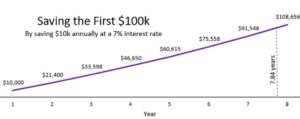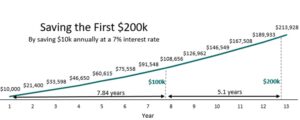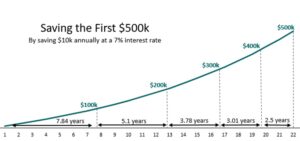Taylor Swift: What’s the Big Deal?

I’ve been trying to understand the Taylor Swift phenomenon – how she became perhaps the most successful pop star of all time.
Here are some of the facts:
* She is the “most-streamed artist of all time” on Spotify. (In 2023, her songs were streamed 29.1 billion times.)
* Her debut tour – “Fearless” (2009-2010) – at Madison Square Garden sold out in one minute.
* “Eras,” her most recent tour, is the first-ever to gross $1 billion in ticket sales.
* She was the first and only artist to have four albums sell over 1 million copies in the first week.
* “Speak Now” (2010), her third album, was the first album to have all its songs hit the Billboard charts.
* Her fifth album – “1989” (2014) – spent a full year in the top ten on the Billboard Top 200.
* With her seventh album – “Lover” (2019) – she was the first female artist to have six albums sell more than 500,000 copies in a single week.
* She has won the most American Music Awards (40), the most Billboard Music Awards (39), the most Grammys for “Album of the Year” (4), the most MTV Video Music Awards (4), and the most IFPI Awards for “Global Recording Artist of the Year” (4).
* She was TIME Magazine’s 2023 Person of the Year, and is the only female artist to have been featured on the cover of the magazine four times.
* At 26, with a net worth of $250 million, she was the youngest person to be included in Forbes’ “America’s Self-Made Women List” (2016). And she currently has a net worth of $1.1 billion.
And there’s more. Lots more. She has won more awards and been on more “best” lists than I have space for. Click here to see them all.
Now here’s the thing…
I don’t think I’ve ever listened to any of her songs. I listen to music as much as the next person. It seems there is also music playing in the background, whether I’m home or at work. And yet, I have never heard Taylor Swift. Or if I have, I did not realize that’s what I was listening to.
I formed an impression of her from snippets I came across in the mainstream media. She seemed to me a contemporary reincarnation of Madonna, but less challenging of mainstream conventions, more accepting of social norms, and less interesting as a musician and songwriter than Madonna was in her prime.
And I had a prejudice against her that was brilliantly articulated by Ben Shapiro, when, on one of his podcasts, he said something like: “I have nothing against her, but I find it odd that a 34-year-old woman is still writing songs about teenage romance.”
The photographs I had seen of Taylor Swift confirmed my prejudice. She looked tall, lanky thin, and pretty in a very ordinary way – a long-haired Midwestern Girl Next Door dressed up like a cheerleader. Her style, as a pop star, seemed surprisingly bland to me. And that was another puzzle. Perhaps the look was conscious – a homogenized, inoffensive blend of her audience. Not what you would expect from a member of the “Tortured Poets Department” (the title of her most recent album).
There was nothing about what I knew about Taylor Swift at that point that gave me a hint about why she is, by all objective standards, the most successful pop musician of all time.
Then, a week or so ago, I found myself in a conversation about her. I don’t remember how she came up, but I remember being surprised to learn that three of the adult women I was speaking with had a favorable impression of her. And one of those women was in her sixties!
Gee, I thought. There are things going on here that I don’t understand. Contrary to my superficial impressions, was Taylor Swift a much better lyricist and singer than I had presumed? And if she wasn’t, what kind of amazing marketing strategy did she use to propel herself to the very top of the mountain of pop music stardom? How did this seemingly white-toast pop singer get bigger than The Beatles?
The world certainly is not in need of another opinion of or about Taylor Swift’s success – and especially not from a 73-year-old White guy. Nevertheless, I set about to find answers to those questions for… for… In case I was asked to make a speech about her one day?
I read a half-dozen magazine stories about her, and even skimmed a book about her, sitting in the corner of a bookstore last week. (No, I didn’t buy the book. I hadn’t the nerve to hand it to the checkout clerk.) I also spent at least six solid hours listening to about 30 of her most popular songs.
And, like it or not, I have formed an opinion of Taylor Swift – about her fame and her talent – which, since I haven’t yet been invited to make a speech about her, I decided to publish as this “Special Issue” of my blog. (And “Special Issue,” as I’ve told you, means: “You may want to skip this.”)
First, a disclaimer: I have no expertise in music or musical talent. My sole credential is that I have listened to thousands of rock-and-roll, country, pop, soul, R&B, and even rap songs for about 60 years now. But as I say in the disclaimer at the bottom of every issue, I have no problem talking about things I know very little about.
So, let’s get to it. Here’s what I think:
Taylor Swift is a good and maybe even very good singer. But she is not by any means, a great singer.
She has an impressively wide vocal range. Not amazingly wide like, say, Mariah Carey, Prince, or Whitney Houston. But wider than I would have guessed. And more than sufficient to convincingly deliver the songs she writes.
She also has impressive control of the tonality of her voice, which she uses to add depth and emotion to her lyrics –the sort of depth and emotion that appeals, as Shapiro suggested, to teenage girls.
As a lyricist, I would rate her as good to very good. Her lyrics, and especially the way she puts her lines together, are much, much better than I expected. As I listened to different songs from different albums and times, I could see that she understood (and still understands) the importance of keeping her stories a bit obtuse, to give them at the same time a touch of mystery and the possibility of universality – i.e., allowing listeners to fill in the narrative blanks, or even reconstruct the stories and the meanings entirely for themselves.
As for her look, her style, and all that – the impression I have of her now hasn’t changed from my uninformed, earlier impression. It is, at best, unremarkable. Not too cold, but not too hot. Somewhere early in her career, she seems to have consciously decided to go neutral in the style department and do her work through her lyrics, her melodies, and her voice.
So, cheers to Taylor Swift for all of that. But it doesn’t explain all of her unparalleled accomplishments.
I won’t presume to have an answer for that, but I do think that her greatest strength as a pop star is that she is acutely aware of what her audience wants from her and equally aware of how she can deliver it to them.
She very well understands the image she projects. She also – and this may be more important – understands her audience, the millions of girls and young women that she writes and sings for. And because she is aware, she smartly limits her repertoire to melodies within her strongest vocal range that create the mood that she knows works so well for her them.
That mood, I think, is key. After listening to a couple dozen of her songs, I could recognize it, and even feel it to some extent. But I don’t have the technical vocabulary to describe it. The best I can do is say that it is a softish, almost melancholy, combination of anguish, longing, and hurt.
To her credit, from the little studying I’ve done, it seems fair to say that Taylor Swift has ventured beyond her early thematic, lyrical, and melodic boundaries. Like other enduring pop stars, she has been able to alter her music output over the years as the musical landscape of pop has changed, but in a way that continues to appeal to her older fans, while also attracting younger ones and thus ever widening her base.
She seems also to have been purposeful in the topics and themes she chooses, as well as the diction she employs. (She uses the F-word smartly in many of her softest songs.)
One thing I was particularly impressed by was the way she uses rhymes and near-rhymes. Many, if not most, of her songs are held together by rhyme, either end rhymes or internal rhymes. Rhyme is normally an obstacle to pop lyricists. Used carelessly, it banalizes the emotionality and dumbs down the thought content to the very elementary level we expect of pop music.
But she counters that by inserting secondary stories into her main stories, and secondary themes into her main themes, each one a logical unit to itself, but woven together almost randomly. In this respect, she is more Joni Mitchell than Bruce Springsteen, and more Bob Dylan than Judy Collins, if you know what I mean.
The through line to all this is that Taylor Swift has maintained in all her later music the tone and emotionality that made her successful at her start. And she has been able to do that because she is so self-aware as a musician and performer and so aware of what her fans want from her.
In short, Taylor Swift is a sensitive, intelligent, and skillful singer and songwriter whose enormous success comes from having accidentally or purposefully discovered a way to tap into a kind of girlish, teenage angst and yearning that is deep and universal among young women, but also something useful that women carry into adulthood to feed and soothe their inner girls.
Final Note: Taylor Swift’s main audience is, of course, girls and women. But I know that she has a big homosexual following, too. And I’ve read that she has a growing following among young men and even adult men. This doesn’t surprise me. I’ve come to “sort of” like listening to some of her songs.
Here are a few things to read, if you care to read more:
* “It’s OK to Critique the New Taylor Swift Album” (Amy Odell)
* “9 Times Taylor Swift Crushed 2023” (Forbes)
* “So what exactly makes Taylor Swift great?” (Harvard Gazette)
* “Lead Like Taylor Swift: 5 Top Secrets of Her Superstar Success” (Forbes)
* “9 Ways Taylor Swift Has Changed the Music Business” (Billboard)









